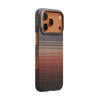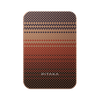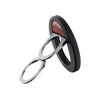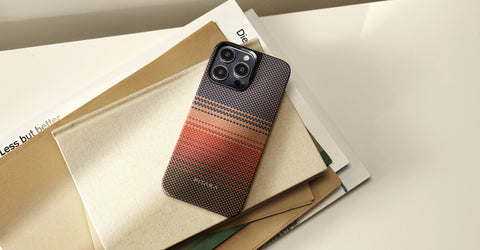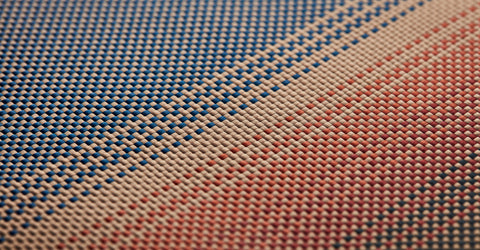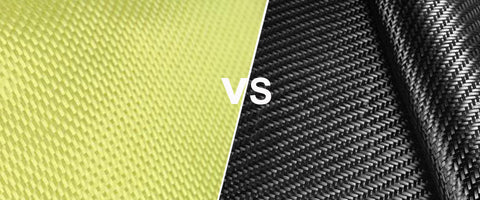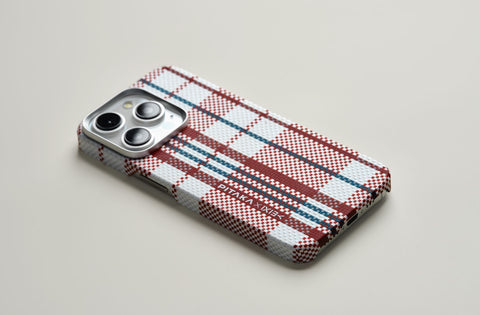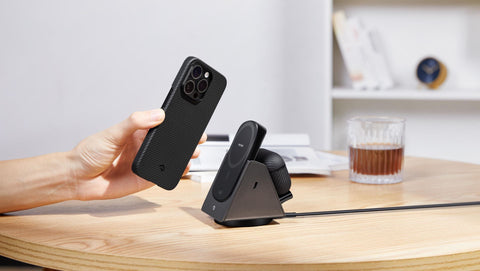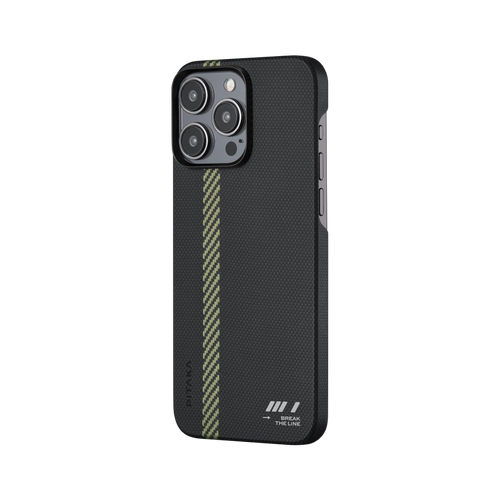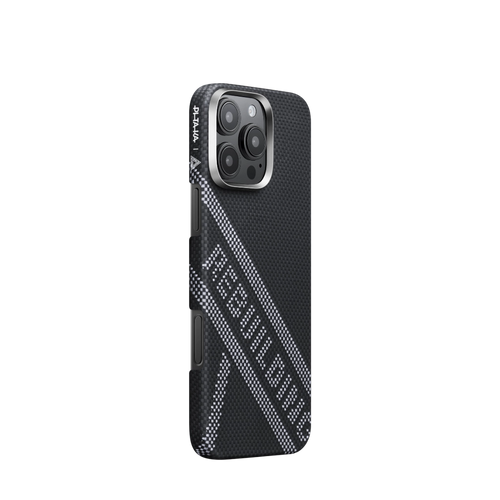If you are familiar with our phone cases, you probably know there are various aramid fiber patterns that look cool and sleek.
Like fabrics and carbon fiber, aramid fiber can be woven into different patterns too. If you don’t own our cases, you may have already seen those common weave styles on your clothes or some cool carbon fiber gears. But today, we’ll introduce a new weave style, Fusion Weaving, an innovative technique to weave phone cases.
Let’s take a look at some of the commonly seen weave styles.
Plain

Plain weaves appear symmetrical and have the look of a chessboard. A weft strand threads pass over a warp strand in an “over and under” sequence. The gap between each strand is minimal, thus making the plain weave very stable, which means the weave does not tend to get out of shape. On the other side, plain weave is less pliable than other weaves, so it’s typically seen on linen clothing and things that have simple formats like flat surfaces.
Twill

Twill weaves boast good flexibility and can be formed into more complicated shapes compared to plain weaves. Two or more weft strands thread over and under one or more warp strands, forming clear diagonal lines across the fabric.
And twill weave styles do not always look the same. The 2x2 twill, consisting of two weft strands threading over one warp strand, is the most common style used in the automotive industry. You’ve probably seen the carbon fiber 2x2 twill weaves in some of those fancy cars or aramid fiber phone cases. It can be found on most PITAKA aramid fiber phone cases which look unique and offer exceptional grip. The other typical style is a 4x4 twill weave in which four weft strands thread over and under one warp strand.
Satin
Satin weave structure has been in use since ancient times. It’s established with each weft strand going under three warp strands and then over one warp strand before repeating the process. In this way, the distance between each interlocking of yarns is longer than both plain and twill weaves, which results in a smooth, lustrous sheen on the surface. Silk and nylon clothing usually come in satin weave style to create a sleek and elegant feel.
With fewer knots in the fabric, the satin weave is even more pliable than the twill weave. It’s also stable and has a high degree of drape (the ability to conform to a complex surface). That’s why satin structure is often seen in products with complex curves and shapes.

Satin weave styles vary, too, based on the harness number. Harness indicates the number of warp yarns that each fill strand crosses and passes under before repeating the pattern. The typical satin weave styles are 4, 5, and 8 harness satin weave. The greater the harness number is, the more pliable the fabric will be.
Basket
Basket weave uses the same weaving way as plain weave except that two or more warp yarns alternately interlace with two or more weft yarns.

If the number of warp and weft yarns is even, it’s Oxford weave, a variation of the basket weave. The Oxford weave is popular in casual shirts.
Unidirectional

Unidirectional weave is one of the structures of high strength. As the name implies, it consists of strands running in one direction only, the warp. The lack of weft decides that the strands are sewn or glued together, so it may easily fall apart compared to other weaves involving warp and weft yarns. Sometimes, a small amount of other material may run in the other direction to hold the primary fabric in position.
Leno
Leno weave, or Gauze weave, is a weave in which two warp yarns are woven twist around the weft yarns. The twisted warp yarns grip tightly to the weft, ensuring it doesn’t move while leaving space in the structure. Leno weave can be seen in produce bags or bags that contain things that would not slip out of those tiny holes. Also, it can work with other weave styles to be used in construction.
Jacquard
A jacquard weave is produced on a special loom, the Jacquard Loom. Invented by Joseph Marie Jacquard in 1801, the new machine used punched cards to control the path of warp strands to create images or intricate patterns in the fabric. It uses pre-determined weave patterns that mix under and over threads and colors to create beautiful design with subtle texture. No wonder it’s popular for drapery and upholstery.
Those are the common weave styles for textiles and composites. Aramid fiber is one of the composites that can be woven into various styles. It’s five times stronger than steel but much lighter, so it has become more and more popular in the accessories industry. PITAKA is one of the brands to design aramid fiber phone cases in the early days and we develop our techniques and design bit by bit to gain an edge in the industry.
Fusion Weaving
Fusion weaving is a new aramid fiber weave style created by PITAKA.
Before that, only one weaving sequence was seen in weaving aramid fiber. The styles and colors are limited too. Our engineers tried to adjust the sequences of different raw aramid fiber strands of various colors on the machine.
After numerous tests, they’ve come up with a way to blend two or more weaving methods on one loom, so the surface of the fabric appears two or more weaving styles and more colors. The new technique requires precise control of the fabric tension and the path that warp and weft fibers intertwine.
It’s definitely a huge challenge for our engineers, but driven by the craftsman’s spirit, they managed to break through and steer the development of aramid fiber weaving technology. They named this new weaving style of aramid fiber fusion weaving.

Fusion weaving represents a weave that features multiple weave styles and colors and a three-dimensional feel on aramid fiber fabrics. It brings the style of PITAKA aramid fiber cases up another level. It also offers a better grip and feel. Take a look at the phone cases with the colorful Fusion Weaving. The collision of four colors and contrasting different weaving patterns will bring you a whole new experience.
To learn more about fusion weaving, click here.

